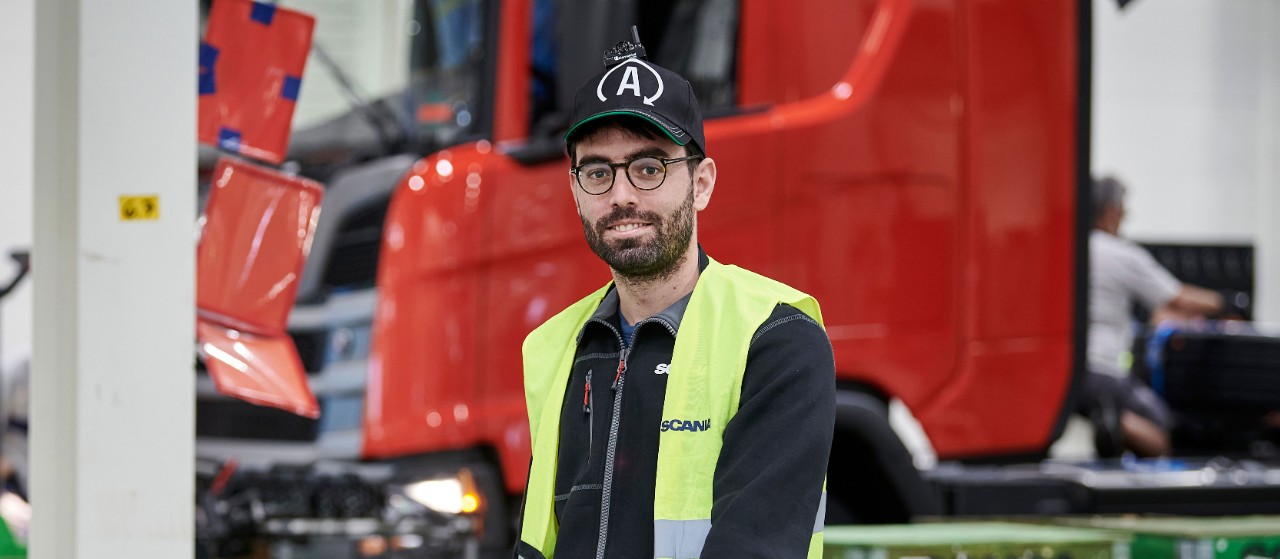
Movement for greater efficiency
27 AUGUSTI 2020
For half a century, spaghetti diagrams have been utilised to chart the movement of operators on the factory floor. This common method enhances not only efficiency but also helps ensure sound ergonomic practices. Avoiding wasteful, unnecessary and cumbersome movement is key in achieving lean production processes.
At Scania, as in countless other manufacturing industries throughout the world, process engineers have meticulously followed operators during shifts while tracing movement with pen and paper. These result in spaghetti diagrams that can help reveal ill-planned work practices, not seldom forcing operators to unnecessarily stray from their assigned work positions. Each assembly position at Scania, for example, has a designated standard, which corresponds to the best possible way of working, considering quality, efficiency and ergonomics. Yet, there is always room for improvement.
Scania Smart Factory Lab searches for digital solutions
Enter Scania’s Smart Factory Lab, an in-house incubator that develops innovative and cost-effective solutions to enhance efficiency in production. Why not trace movement digitally rather than awkwardly and imprecisely recording steps on paper? By attaching a small transmitter to a cap and continuously record data, we can obtain an exact rendering of the operator’s movement throughout a shift.
“We tested this technology along the initial truck frame assembly and found that assignments forced operators to switch sides of the frame, take unnecessary steps to obtain tools or components as well as having to paus work until other assignments to be completed,” says Martin Mattheus, a kaizen team leader at the assembly plant in Södertälje.
Martin Mattheus, Kaizen Team Leader at the assembly plant in Södertälje, says that the technology immediately pinpoints inefficiencies in the production process.
“There’s always room for more improvement”
At the production unit, as throughout Scania’s production facilities, staff regularly engage in what are called kaizen weeks, a fundamental element in the Scania Production System to help identify and analyse improvements. Drawing spaghetti diagrams is one way of tangibly highlighting shortcomings that can be remedied. “We’ve been doing this for years, but there’s always room for more improvement,” says Mattheus.
The added advantage of digitally tracking movement is that the data is stored and can subsequently be accessed for comparisons when work practices have been adjusted. Did this change actually lead to more efficient production?
The trials will now be expanded to logistics and component deliveries to the production line. These trials will encompass not only logistics personnel but also their tow tractor vehicles to ascertain optimal movement in the factory area.
“I wouldn’t be surprised if we soon will see these systems being used throughout Scania’s production worldwide,” says Professor Lars Hanson, Smart Factory Lab.